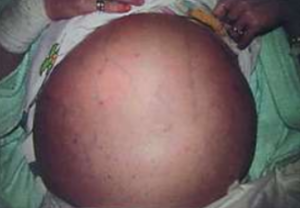- Increased structural resistance
- Fibrous tissue
- Vascular distortion
- Intrahepatic vasoconstriction
- Decreased nitric oxide bioavailability
- Splanchnic arterial vasodilation

- All leads to portosystemic collaterals

Predictive Models

Cirrhosis Severity
Child Pugh Classification Includes: encephalopathy, ascites, INR, albumin, bilirubin | |
|---|---|
| Score | Interpretation |
| 5-6 | A – least severe liver disease |
| 7-9 | B – moderately severe liver disease |
| 10-15 | C – most severe liver disease |
Model for End Stage Liver Disease (MELD) Includes: creatinine/need for dialysis, bilirubin, sodium, and INR | |
|---|---|
| Score | Interpretation |
| 9-40 | Predicts 3-month mortality Worsens with increasing score Consider listing for transplant ~15-17 |
Clinical Presentation
- Anorexia
- Weight loss
- Weakness
- Fatigue
- Osteoporosis
- Jaundice
- Pruritus
- Gastrointestinal bleeding
- Coagulopathy
- Easy bruising
- Increasing abdominal girth
- Mental status changes
Physical Exam Findings



- Decreased blood pressure
- Spider angiomas
- Palmar erythema
- Sweet, pungent breath
- Gynecomastia
- Ascites
- Peripheral edema
- Hepatomegaly
- Splenomegaly
- Asterixis
Treatment Overview
- As mentioned, cirrhosis is progressive and non-reversable
- Treatment of cirrhosis is currently focused on mitigating complications that commonly arise

